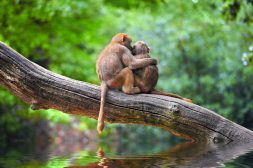Definition
noun, plural: basic dyes
(biological techniques) A dye that ionize in solution giving a positively-charged ions and is used to produce a brilliant color during staining of biological specimen
Supplement
Biological staining is a common laboratory technique applied in the study and identification of a specimen. It is carried out for use in microscopy. An unstained specimen would be difficult to observe in a typical microscope. Staining or dyeing the specimen helps in highlighting microscopic structures such as cell organelles, cells and tissues. There are different kinds of staining techniques. Examples include gram staining, endospore staining, counterstaining, differential staining, Ziehl-Neelsen stain, Haematoxylin and eosin (H&E) staining, Papanicolaou staining, PAS staining, Masson’s trichrome, Romanowsky stains, silver staining, Sudan staining, and Conklin’s staining. Dyes that are used for biological staining may be basic, neutral, or acid.
Basic dyes used in biological staining ionize in solution to give cations (positively charged ions). The cation in a basic dye is the colored component of the dye molecule that binds to anionic groups of nucleic acids or acidic mucopolysaccharides. Basic dyes stain basophilic structures such as nuclei, ribosomes and GAGs. Examples of basic dyes are methylene blue, toluidine blue, thionine, and crystal violet.
Synonym(s):
- basic stain
Compare:
See also:
Mentioned in:







